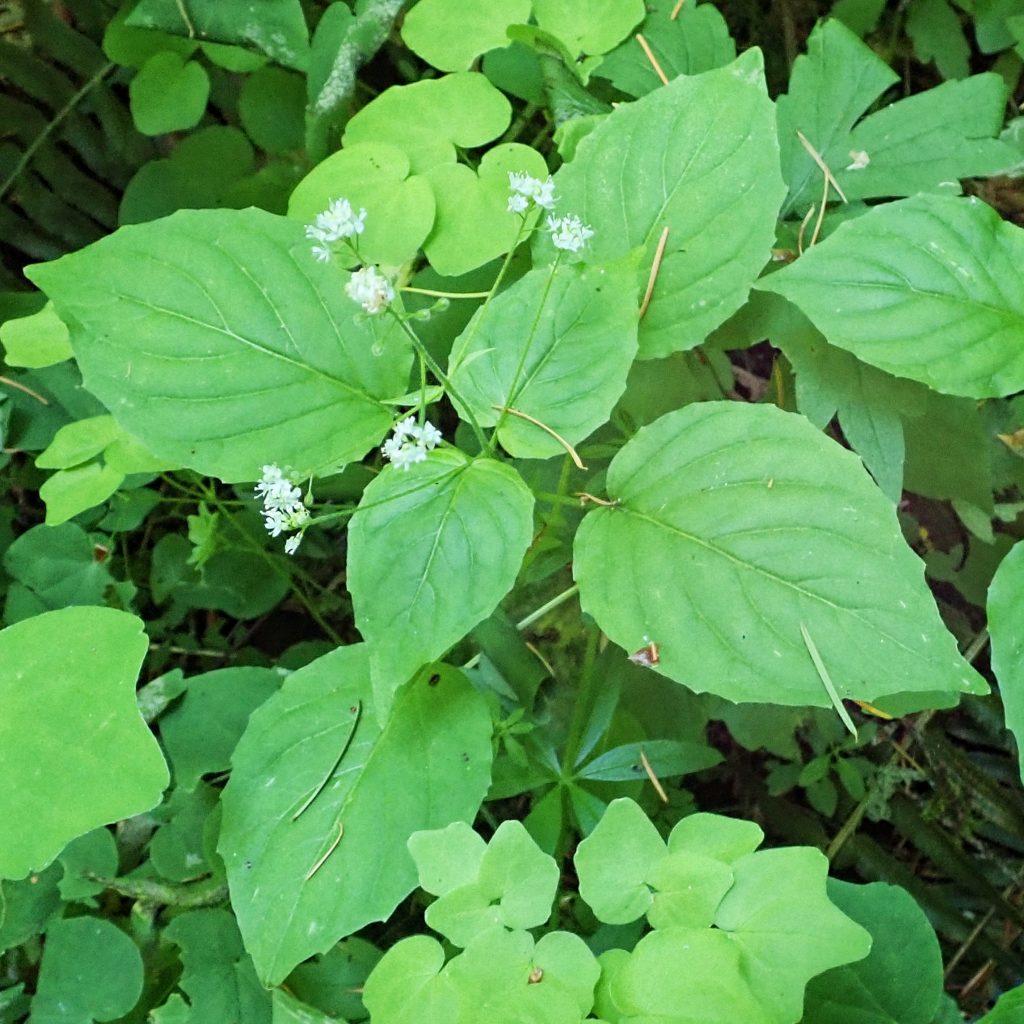
This delicate little member of the willowherb/evening primrose family (Onagraceae) is called enchanter’s nightshade, small enchanter’s nightshade, and alpine enchanter’s nightshade. It is not related to the other, mostly toxic, nightshades, which are in the family Solanaceae (a family which also contains potatoes and bell peppers). As far as its ‘enchantment’ abilities, the suggestion is made that it was used as an aphrodisiac, but I can find nothing substantiating it’s efficacy for that purpose, or for it having psychoactive properties. It does seem to have possibilities as an anti-inflammatory and antioxidant.
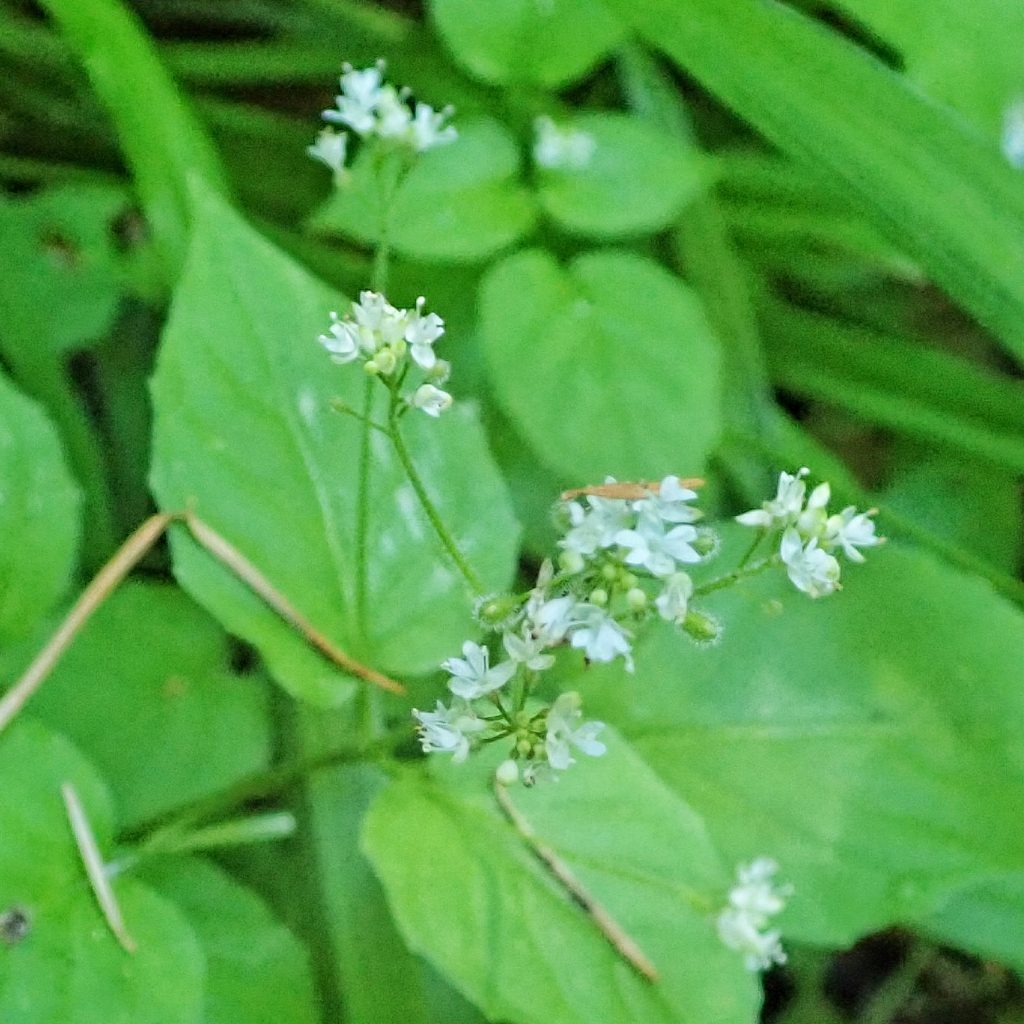
The first time I ever found this I was struck by its delicacy and symmetry. I sank to my knees alongside it and began paging through “Wildflowers of the Pacific Northwest”. As luck would have it I almost immediately saw a picture that went ‘ding’. And the really amazing thing was that the photo was identical to the plant I was looking at, right down to the angle at which I viewed it. Now that is what I call an easy identification!
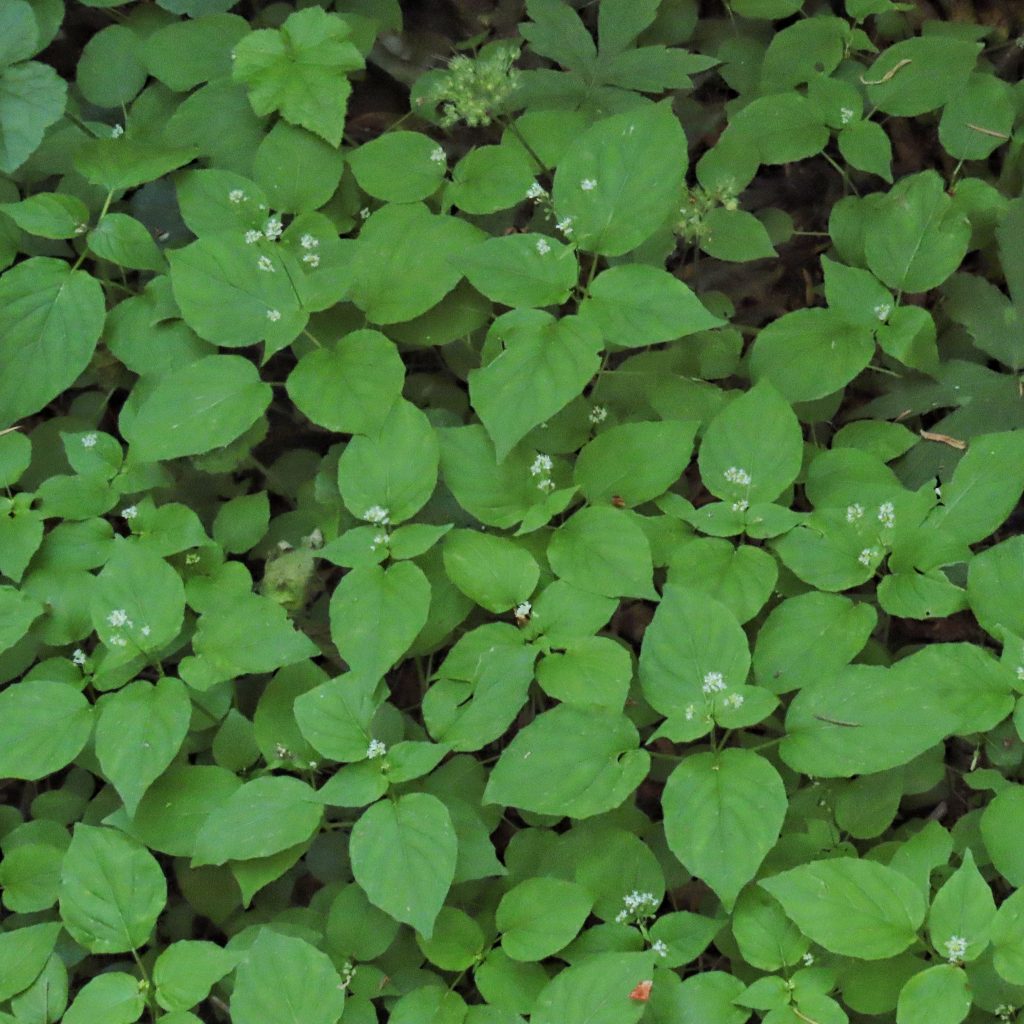
Description-Low growing (4-16” tall) perennial that spreads by rhizomes as well as seeds and often forms mats; leaves with petioles, opposite, pointed ovals, margins with widely placed teeth or smooth, green with fine hairs, up to 2.5” long; inflorescence arises from the center of the plant, usually subtended by a larger and smaller pair of opposite leaves at 90⁰ to each other, sometimes simple but often with many branches; flowers tiny (1.5x3mm), white, 2 notched petals, and two stamens.
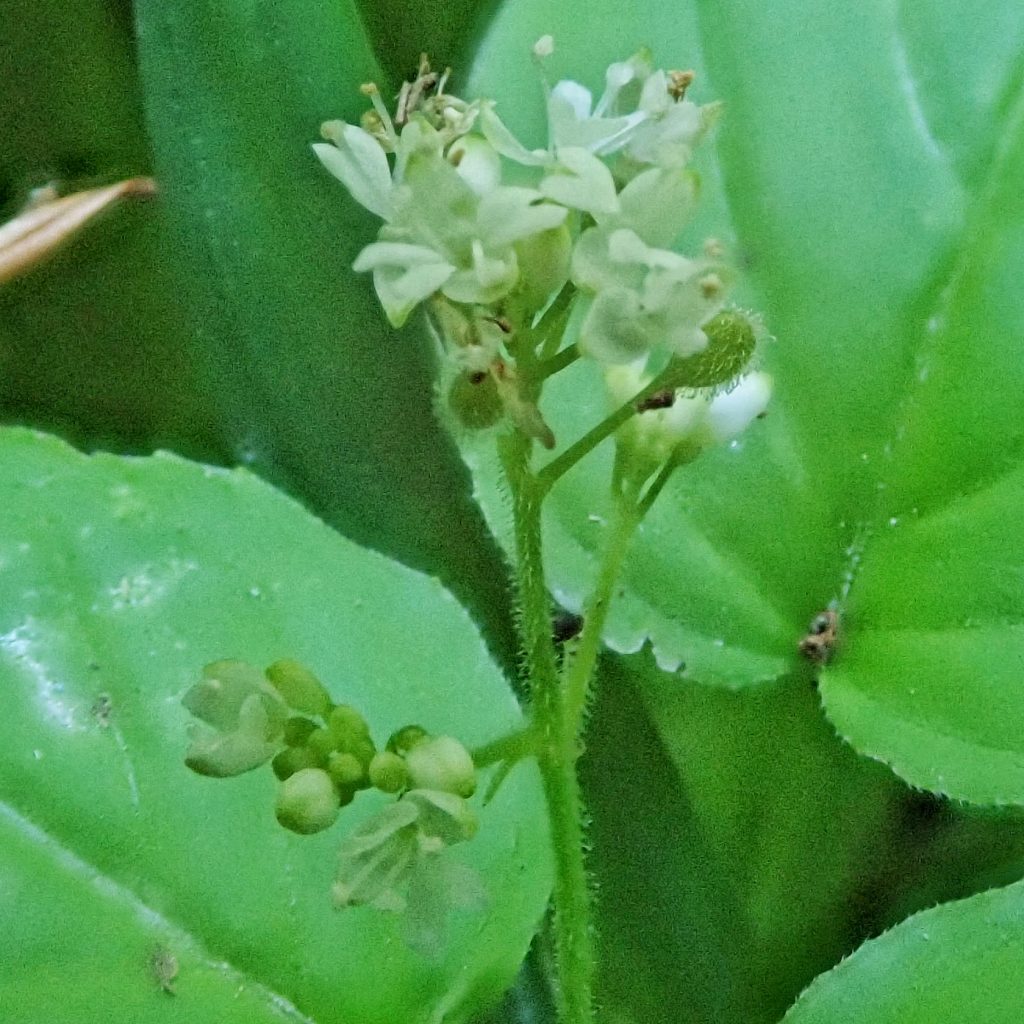
Similar species-This is the only Circaea in our region
Habitat– Moist to mesic shady forests and woodlands to 5,000’ elevation
Range-Holarctic; region wide in appropriate habitat
Reproductive timing-Blooms May to July
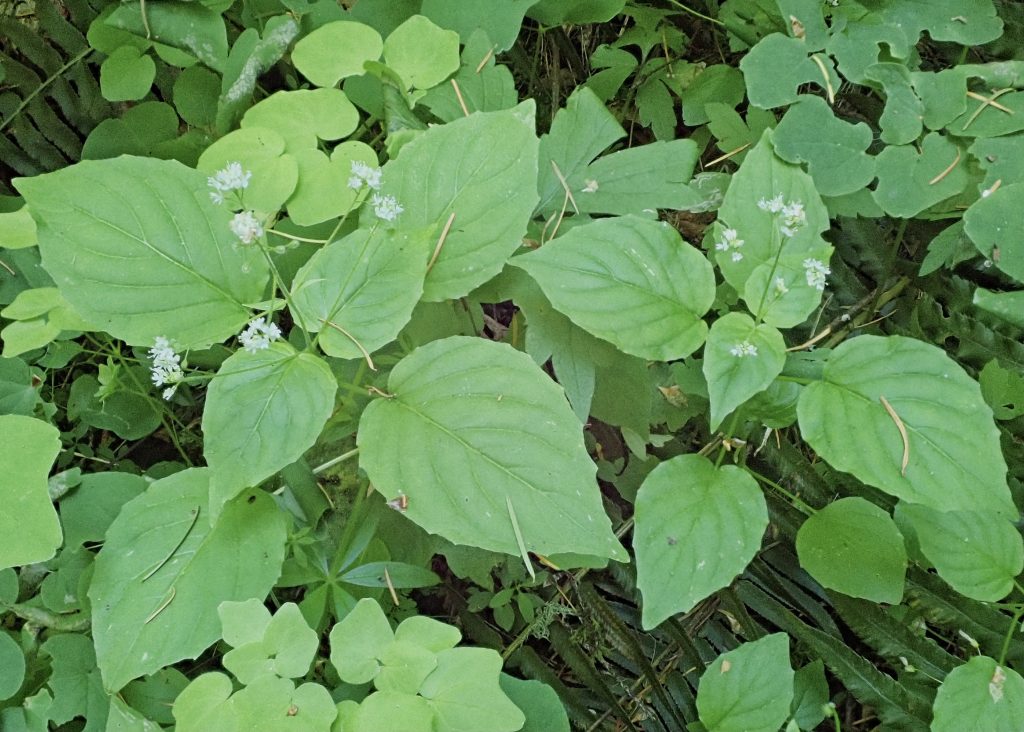
Eaten by-Deer, rabbits, and gastropods graze this plant; I can’t find any literature about possible larval hosts,ETA-my friend Michael Palmer pointed out that the larvae of the moth Mompha terminella are leaf miners on this species-Thanks Mike!; mostly pollinated by various Diptera (flies).
Etymology of names–Circaea is named after Circe, an enchantress in Greek mythology who was said to use these plants to cast spells. The specific epithet alpina is from the Latin for alpine and refers to this species’ preference for upland habitat, although it can be found as low as sea level.
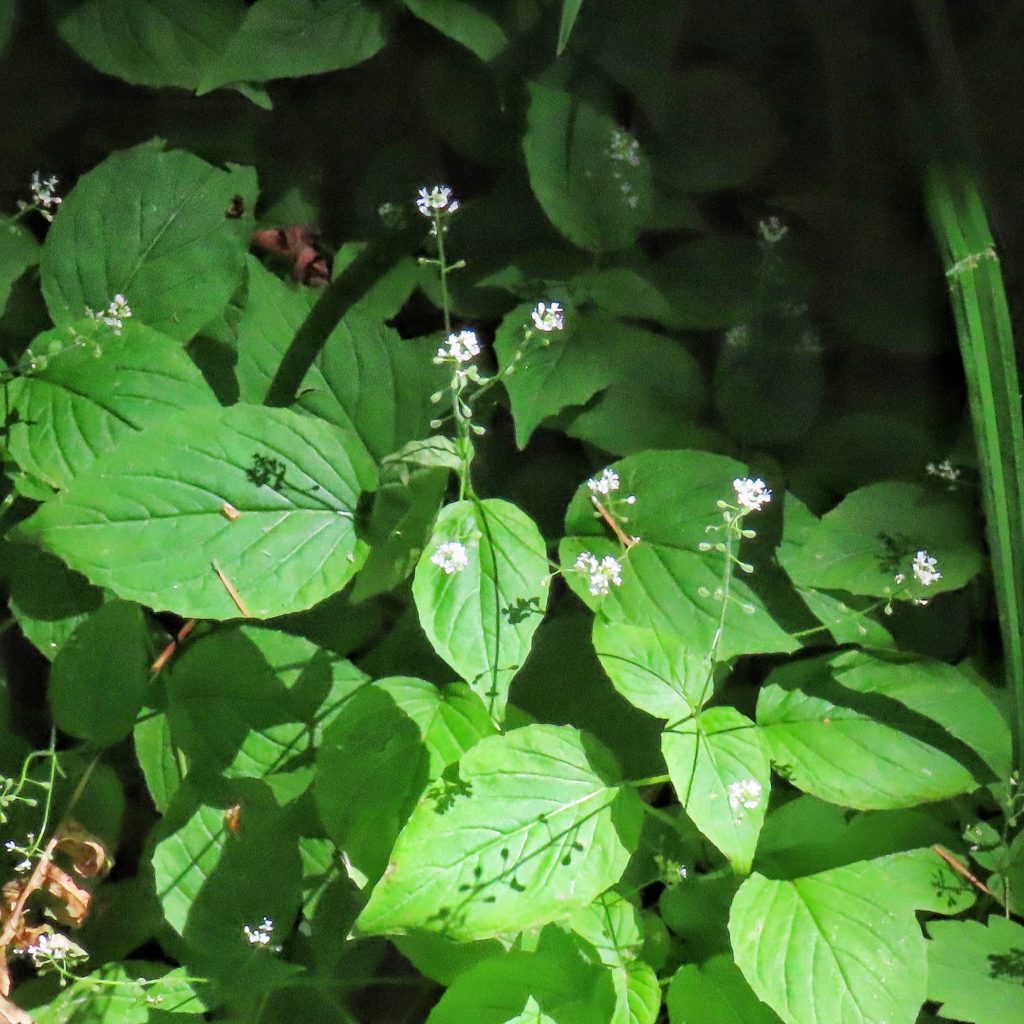
https://eflora.neocities.org/Circaea%20alpina.html
http://biology.burke.washington.edu/herbarium/imagecollection/taxon.php?Taxon=Circaea%20alpina
https://www.pnwflowers.com/flower/circaea-alpina
https://www.woodlandtrust.org.uk/trees-woods-and-wildlife/plants/wild-flowers/enchanters-nightshade/
https://de.zxc.wiki/wiki/Alpen-Hexenkraut
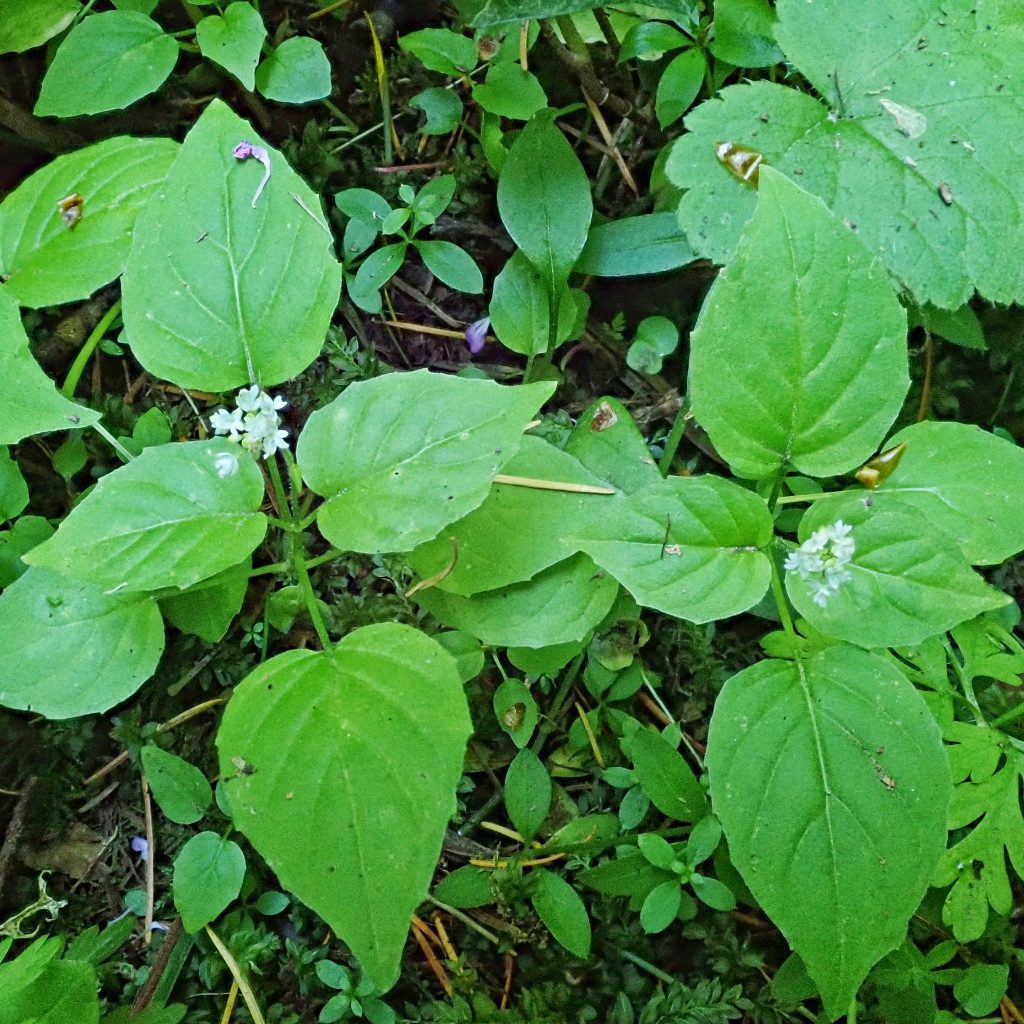
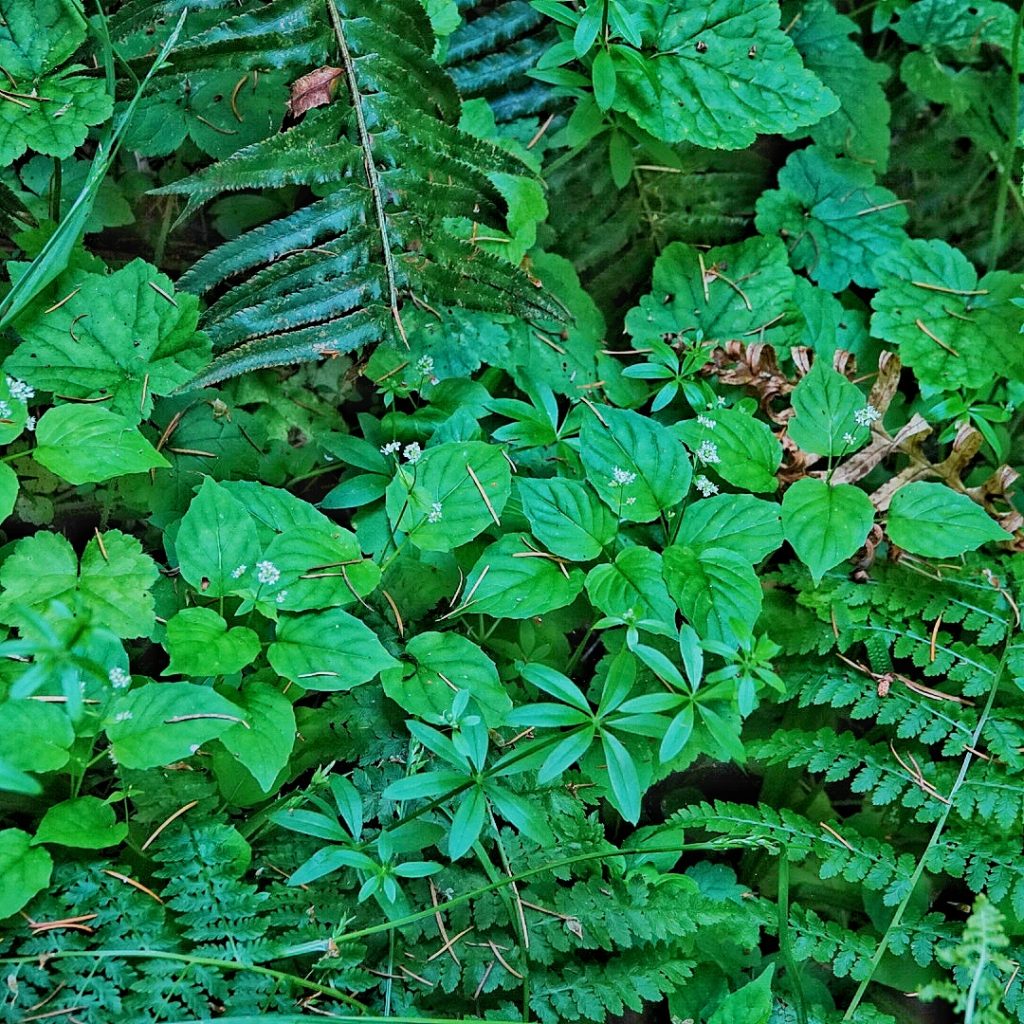
‘Texture o the forest floor” … what a lovely image in words as well as the photo!
Thank you, Marnie!